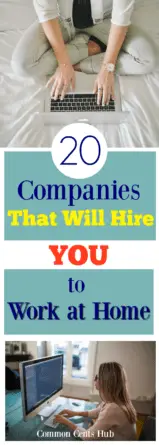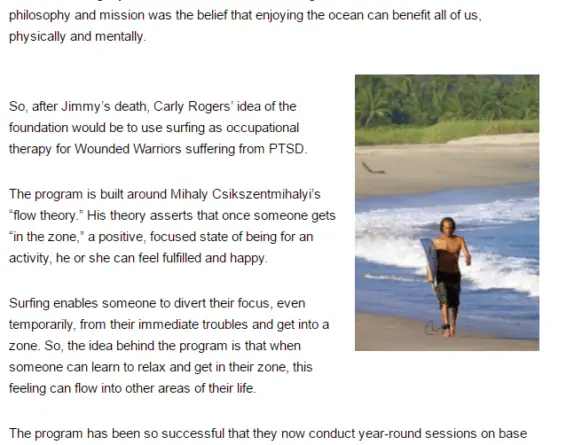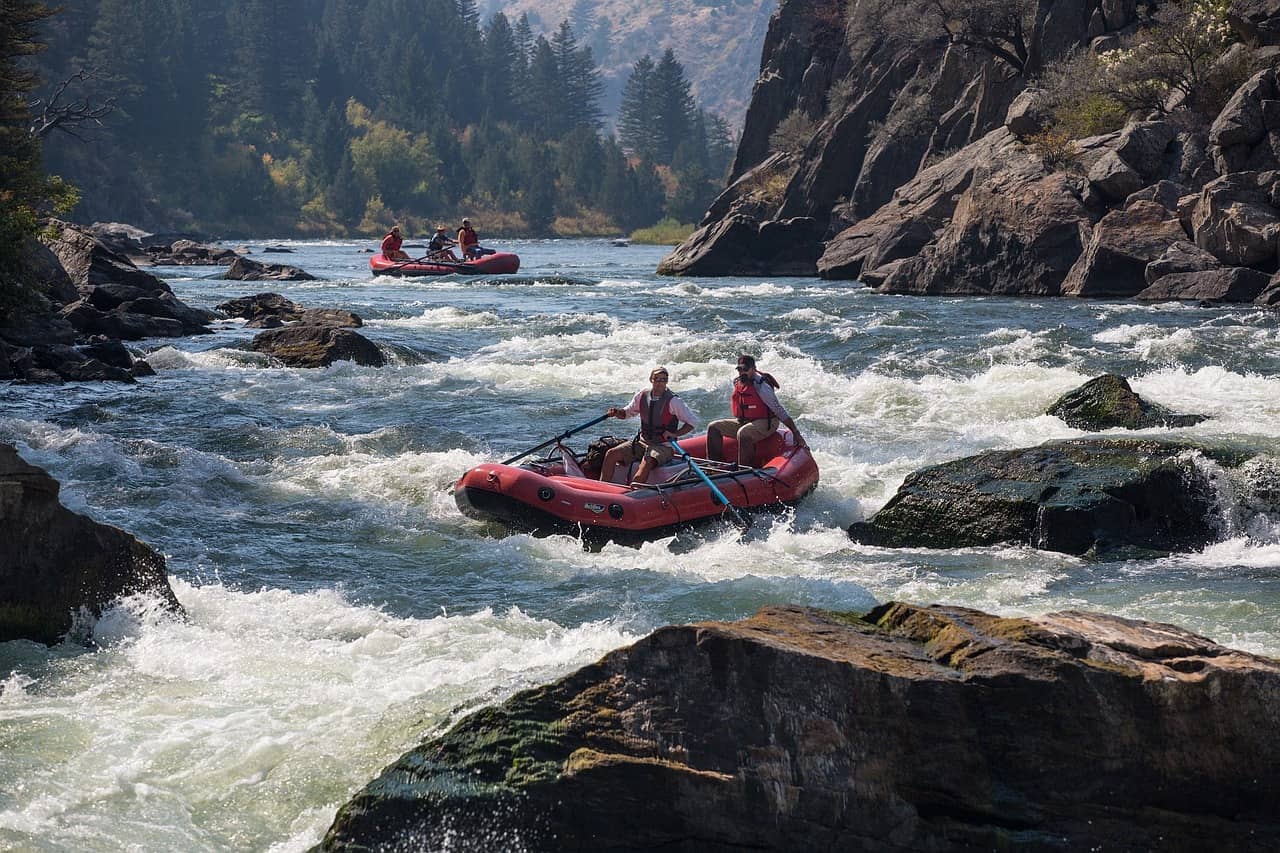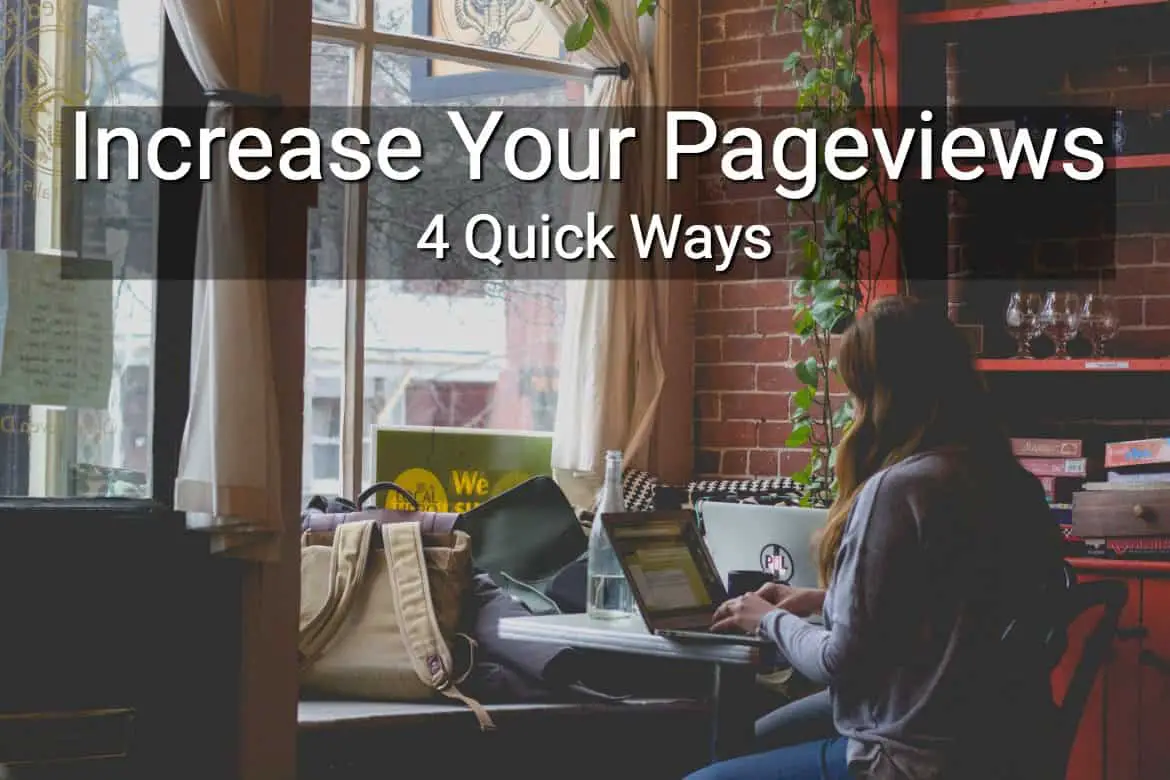“This post may contain affiliate links. Please read my disclosure for more info.
If you’ve been blogging for a year or less, it may start to feel like you’re running up hill with no peak in sight. If only you knew someone was actually reading the posts you’ve spent hours writing. If only there was a simple way to increase page views. Chasing page views may not be the best long term strategy, but there’s no denying, they certainly help to get your site established.
Writing engaging content that solves problems, and is actually being searched for, is always at the top of the list. But sometimes taking a step back to compare what we’re doing, to what we know is successful can help.
I don’t mean copying anyone’s work. But there’s a lot to learn by taking some time to notice how successful blogs work.
Things like:
- The layout. Your site can be cluttered with multiple fonts and confusing to navigate, or clear and easy.
- The format. Sentence and paragraph length can make your post easy to read and skim, or look like a book report.
- Images. They can relate to your content and be visually appealing, or they can be distracting.
- Opt-ins. Is it something related to the post, that the reader would find useful?
I took a step back after about 25 posts, to study what some successful blogs were doing that I wasn’t. I didn’t expect to find instant success, but I did spot 4 obvious things they were doing that I either wasn’t, or wasn’t doing well.
And once I implemented all 4, I found they were in fact, some pretty quick ways to increase page views. I made these changes in the middle of May, and until then, I had never seen more than 50 page views in a day. But about two weeks later, I woke up one Sunday morning to see 28 people on my site at once. Not very impressive to an established blogger, but for me, at that point, it was huge.

Table of Contents
What Were They Doing That I Wasn’t?
1. They Used Internal Links to Related Content
If someone’s already on your site reading a piece of content, there’s a good chance they’ll be interested in something related to that post. So, wherever it’s appropriate, an internal link to related posts is bound to increase page views.
It’s also a great way to reduce your bounce rate. If the idea is to engage your reader and entice him/her to browse your site, then making it easy to navigate is important.
Once you’ve written 20-30 posts, there’s got to be a few others that relate to the one you’re writing.
I noticed also, that related links seem to do better when you create them early in the post, rather than towards the end. And you’ll want to set your link to “open in a new tab”. So when a reader clicks your link, your site will still be open on a tab in their browser.
2. They Picked a Social Media Platform to Promote Their Site
The best ratio between producing content and promoting it is debatable. I’ve heard it should be as much as 80% promotion to 20% content creation. But it depends too, on how far along you are with your site.
If you were opening a brick and mortar store, you wouldn’t advertise the opening until the shelves were stocked and the employees were trained. But if you’ve got 20-25 posts, then in my opinion, it’s time to start getting some eyes on them.
Ruth Soukup talks about waiting to promote your blog until it’s developed sufficiently in her book, How to Blog For Profit Without Selling Your Soul ...”There really is no point in trying to build your blog as a business if your content is just okay, your navigation is an exercise in frustration, your do-it-yourself design screams amateur, and your poor quality images are completely uninspiring and un-pin-worthy….sustainable blog traffic growth only happens if your content rocks.”
But you’ve gotta start somewhere right?
I’d recommend starting to promote your blog on one platform until you have a good grasp of it. Trying to learn the in’s and out’s of multiple platforms and keeping up with content is just too frustrating.
For my money, Pinterest is the one to start with. Here’s why:
- It has a regular monthly audience of over 150 million users.
- The learning curve to get your content out there is much shorter than becoming an SEO expert.
- It’s free.
Learning good SEO practices is definitely something you’ll want to do for the longer term. It’ll provide more sustainable growth. But for a new blogger who wants to get his/her content seen, and start to see results within a matter of weeks, Pinterest is the way to go.
Even though the learning curve for Pinterest is shorter than getting a good understanding of SEO, there’s still some basic things you’ve gotta do when you create pins.
- Make the pin “clickable”. Have a clear call to action that tells the reader exactly how this will help them.
- Use key words in the title and description.
- Make it visually appealing. Use fonts that are clear, and easy to read.
Here’s an example of two pins I created.
The first, is a pin I created in Canva during the first few weeks I used Pinterest. See how the font that says, “That Will Hire You to” kind of gets lost in the picture? Even the rest of the message doesn’t stand out on a screen with 30 other pins.

Then a few weeks later, I recreated it using Pic Monkey. The message below is clear, easy to read and simple. This pin almost immediately quadrupled the views for this post. Canva and Pic Monkey are the two most popular apps to create pins, but I prefer Pic Monkey. I only use basic options like selecting fonts, images and sizing, but I prefer their interface over Canva’s.

3. They Invested Some Money in a Paid Theme
They each had very simple, clean layouts with a clear menu. An uncluttered layout puts the focus on your content rather than multiple fonts and colors. And a more minimal theme will look less crowded if you eventually start inserting ads.
When I started my blog, I was trying to save costs. I chose a free magazine style layout which looked great in the samples. But after working with it for a few months, I realized it was missing many of the customizable options that other themes had.
So, I spent $59 on a new theme and about another $10 for 12 months of support on it. Working with it the first night, I was amazed at the number of options I could tweak and adjust the way I wanted. For less than $70, I knew immediately it was a good move.
Once your site is earning a steady income, you’ll probably want to spend more on a custom site design. But until then, there are plenty of good looking themes for less than $100.
If you’re thinking about migrating to a new theme and are looking for ideas, think about some of the blogs you regularly read. Try using the site What WordPress Theme is That. You can enter a site name, and if it’s a WordPress theme it’ll usually show you the theme name. It’ a good way to get a few ideas and see how various themes can be customized.
4. They Were Using Good Quality Images on Posts.
Comparing theirs to mine, I was using smaller images, around 350 x 500 pixels that I interspersed around the text. I’d either right or left justify the small picture and have the text wrap around it, kind of like a newspaper, like this:

When I compared our sites, I could see right away that combining large images that relate to your content does make the blog more visually appealing. Content is king, of course, but breaking it up with relevant images, headings, and structure is important too.
Readers skim a blog post and decide within a few seconds if it’s something worth a few minutes of their time. So, if it’s written in long multi-sentence paragraphs with no breaks, subheads, links or images, it’s not going to draw the reader in.
So, I went through every post and upgraded every image. If you’re worried about slowing down your site with larger images, you can use sites like JPEGMini or PunyPNG to optimize them.
See the difference with the image below? It displays more like a magazine and grabs the reader’s attention more. If you think of some of the most popular magazines, like People, National Geographic, or the old Life magazine, one reason people are drawn to them are the great photos.

Should You Invest Money in Courses the First Year?
Blogging isn’t a get rich quick scheme at all, and if you’re knee deep in your first 25 posts, you probably know that already. So investing a lot of money in your blog before you see any income may seem wasteful.
But any successful blogger will tell you that one of their key breakthroughs, was when they figured out what to work on, and in what order. Your ROI for a given task is much different in your first 3 months of blogging than it will be in your 2nd year. Especially if you’re building a business.
The two courses that helped me most in my first year, were one that gave me a solid understanding of how to build your blog into a business, and one that showed me exactly how Pinterest works:
Elite Blog Academy, or EBA, teaches you everything from generating the right content, to structuring your blog, promoting it, and then building it into a platform to generate steady income. It guides you along so that you’re constantly working on the right task at the right time.
EBA isn’t cheap, but I look at it this way – It’s easily the equivalent of a few college courses. Some people take up to a year to go though the entire course. But each step is laid out clear and simple, and if you complete each one in order, you’ll build a profitable business. EBA is only available once a year, but you can get on the waiting list here.
The second course I’d recommend if you’re new to blogging, is Carly Campbell’s Pinteresting Strategies. There’s a variety of Pinterest courses out there, and from my experience, most of them focus on creating pins that get noticed.
But Carly’s course teaches you about how Pinterest works. How it views the content you give it, how it learns about your content, and how you can use that information to maximize the audience that sees your content.
Being successful with Pinterest used to be a matter of getting accepted to as many large group boards as possible. Then you’d spray hundreds of pins across your group boards and hope for clicks.
But like other platforms, Pinterest changes it’s algorithm now and then. And one of the recent changes has de-emphasized the value of group boards. That’s why it’s important to have a strategy rather than using the spaghetti against the wall technique.
Pinteresting Strategies will take the hoping out of your strategy. You’ll know how to create clickable pins, and then how to pin them so that Pinterest shows them to the widest audience possible.
Final Thoughts
If you’re in the first year of blogging and things don’t seem to be happening as quickly as you thought, hopefully this will provide a little encouragement. Beginning a blog is definitely an up-hill climb.
At the same time, you’re trying to conceptualize your typical reader, and write content that would would serve them well. You’re spending dozens of hours writing posts. You’re learning about things you’d never heard of a year ago. Things like SEO and plugins and meta descriptions.
Like Ruth said above, “There really is no point in trying to build your blog as a business if your content is just okay.”
So, if you feel that your content is addressing the pain points of your audience, then try a few of these checks.
- Is your site visually appealing?
- Is the menu clearly laid out with well-defined categories?
- Do you have quality images that relate to your content?
- Are you using relevant internal links to promote your other content?
- And lastly, are you promoting it effectively?
Feel free to let me know in the comments below, how you were able to get past a plateau with your site. Did you find other ways to increase page views that worked well for you?
RELATED POST – How To Start a Blog That Will Replace Your Income
How to Start Your Own Blog - FREE 7 Day Email Course

Over the next week, we'll cover how to get setup, what to write, how to promote your blog, grow an audience, and begin to monetize your site. It's all the information I wish I had when I started.

